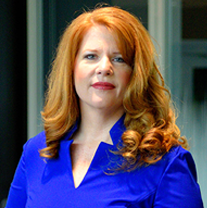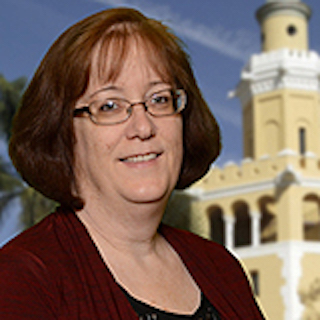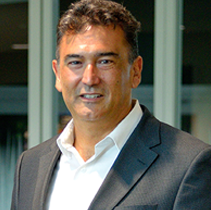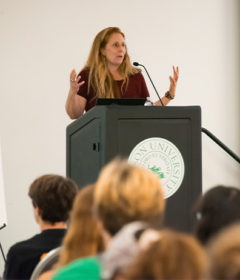Everyday Heroes at Stetson

The timing of Stetson’s big pivot last spring wasn’t exactly ideal for some of the people who were most responsible in making it happen.
For sure, the general circumstances nationwide were not good, as colleges and university braced for COVID-19. Yet, on March 12, 2020, when former President Wendy B. Libby, PhD, announced that all classes at Stetson would move online March 18 and continue that way through the spring semester, the news came with a few noteworthy backstories from IT staffers.
For example, Lisa Sawtell, director of Online Learning and Educational Technology, had just returned from a 10-day vacation in Europe, where she visited six countries.
Julie Kitzmiller, academic technology manager in the Office of Media Services at Stetson’s College of Law, had planned a nice vacation with her sister who was from out of state, with ideas for travel around Florida. Those plans, of course, weren’t realized.
Also, Kim Canup, after working at Stetson’s IT help desk since July 1998, found herself learning a new role last fall as a faculty-support specialist on Blackboard, which meant she would ultimately have to navigate the nuances of online instruction while trying to master them herself.
Then, Stetson’s move to online learning was made, prompting the often unseen engines of a university to crank up at almost unprecedented levels, regarding both productivity and stress.
In turn, the emergencies created by COVID-19 also brought to light the work of what can be called Everyday Heroes at Stetson — people and departments making extraordinary efforts appear routine in very uncommon times.

In this case, those efforts brought new life to online learning and educational technology, which enabled the speedy and successful transition from in-person classes for faculty and students to an entirely virtual experience.
‘Never in My Wildest Dreams’
Sawtell had managed to make it to Europe just days before such travel was prohibited. Two weeks after she got back to campus, classes went fully online.
“Never in my wildest dreams did I ever think this [pandemic] would happen. Absolutely not,” Sawtell said with a laugh, looking back. “It was very quick. But we were ready.”
Indeed, preparations that had begun years earlier paid off.
As Sawtell explained, since her arrival at Stetson in 2016 to lead the Office of Online Learning and Educational Technology, disaster preparedness and recovery were strategic priorities, with the thought of both enhancing online learning and moving to its exclusive use, if the need ever arose.
In 2019, that approach led to pursuit of a single, comprehensive digital learning environment across all campuses, schools, departments and instructional modalities — traditional, hybrid and fully online. Stetson selected Blackboard, with Blackboard Collaborative Ultra playing a chief role as the web-conferencing tool of choice (although some professors opted for Zoom or Teams). Then, to briefly summarize, Blackboard was moved to a cloud-based system, and streaming capabilities were broadened with an in-house video-management platform called Ensemble.
Also, to fully support online education, a 24/7 help desk was established, and a remote proctoring solution called Respondus was added for online-testing security.
All of this occurred before COVID-19 became a household name.
“It was fortunately that by the time [the pandemic] happened, the pillars to support 24/7 online were already in place,” Sawtell said. “We had the foundation in place, so when this emergency did arise we were prepared to meet the challenge.
“When we had to go live, it was more a matter of training. … It was communication, training and support. And we got everybody to the end of the term. It might not have been the prettiest and the most seamless, but we everybody finished the term.”

Ditto at the College of Law.
‘Everybody Just Kind of Rolled Up Their Sleeves’
As the March 12 announcement was being made, the College of Law had halted for spring break, giving Kitzmiller, as she described, “a week’s worth of time to transition.”
That time was spent giving some law professors a “crash course” in new technology for online instruction while providing a “refresher course” to others.
“Basically, the ones who needed more help got help from a lot of different corners. Everybody just kind of rolled up their sleeves and went at it, virtually,” Kitzmiller said. “And there wasn’t grousing; we didn’t see that. Everybody was focused on making sure this transition would happen and that the students would not suffer, and that they would get the same quality education, just in a remote fashion.
“When the students came back, there weren’t many hiccups, and we continued to refine and support — as to allow the professors to concentrate on their areas of excellence and not have to worry.”
Just as in DeLand, disaster preparedness proved fruitful at the College of Law in Gulfport, where Media Services had already been recording and archiving first-year classes. Additionally, many of the courses already were online.
In essence, said Kitzmiller, she and the College of Law not only were ready, but also expected surprises along the way. Her words: “Part of what I like about my job is that it’s not the same thing day in, day out. All kinds of new things are cropping up.”
Apprehension to Appreciation
Back in DeLand, much of the success occurred thanks largely to staffers such as Canup, who helped to take faculty from “apprehension” to “appreciation.”
“It was like baptism under fire,” Canup said. “I was learning all the tools myself. It was like, ‘Whoa, what a time to jump into this department.’ But getting thrown into the deep end is just the best way to learn how to swim. My thinking with faculty was ‘let’s see what we can figure out.’
“That’s a huge difference, going from high touch in the classroom, teaching these students, to now you’re miles and miles apart. And you still want to offer the quality that Stetson is known for. It was neat watching the process. … The faculty have good relationships with their students. They translated that into this virtual world. I would sit in their classes and see the students interacting with the professor like they were in a classroom. I’m overwhelmed by how well they have adapted to this whole process.”
Ben Brown, another IT staff member, also was impressed, citing the faculty’s “ability to adapt to the new teaching realities and adopt pedagogies and technologies despite having no or limited experience with these new teaching paradigms.”
“Some faculty who have been teaching here for 30-plus years in person-to-person classes had to become experts, almost overnight, in a format that he or she had never been instructed in and/or have never taught in,” he added. “The faculty did spectacularly.”
At the same time, notably, Brown downplayed any spotlight being cast on him or his colleagues. He eschewed the thought of “special effort,” instead pointing to preparedness.

“When we scaled-up our work to accommodate additional teaching online, our day-to-day routine was not changed,” he said. “What we did have was additional work of the same kind we are used to doing – so it wasn’t that big of a deal. Yes, we were busier, especially when we added the classroom-recording capability across campus, but we did not have to change much.”
That type of selfless comment doesn’t surprise Jose Bernier, Stetson’s CIO and head of the Online Learning and Educational Technology department.Yet, his view differs slightly.
‘The Extra Mile’
“It was a brilliant effort. Our staff worked day and night to be ready for a very quick transition to the online environment,” Bernier said. “And we had to not only put those plans into production, but we also had to make sure we trained all faculty and trained our support staff to be able to support all of the new infrastructure. So, everybody on the team had to go the extra mile to make sure that all those things fell into place.”
Ultimately, early planning put Stetson ahead of the COVID curve, Bernier agreed.
“We received calls from other universities and they were asking me later in the process, like in June [2020], what are you planning to do for the fall. I told them, ‘If you’re planning now, you’re late because the vendors are in such back order nothing is available,” he commented.
Bernier reserved praise for the faculty, too. “We were fortunate in that we had a great relationship with academics,” he said. “That relationship between academics and IT is what made us successful in that migration.
“I’m just thankful that great relationships also existed among all the different areas of Stetson. That camaraderie between all of our departments helped us have a smooth transition.”
Following that initial transition, the work wasn’t done, either. While uncertainty remained entering summer 2020, technology was added to all classrooms in DeLand to accommodate automatic-lecture capture. The goal was to ensure that any student who wanted to learn remotely could do so.
“We wanted to keep the academic continuity going for as many Stetson students as possible [over last summer], given the unknown nature of the virus,” said Sawtell.
In particular, Sawtell congratulated Robert Hanks, director of user services, and Lee Ostrowski, head of network services, for their efforts in outfitting nearly 100 rooms with the capabilities of lecture capture and live video conferencing, two separate technologies.
“That was a tremendous amount of work to do in about six weeks. … The point of this was that faculty could go into the classroom, and any student who had to miss the class would be able to view it at a later point, with the automatic lecture-capture technology, or they had the option to participate in the class live through a Zoom or Teams call,” Sawtell explained.
For the current 2021 Spring Semester, Sawtell and her team can only spare a deep breath.
“Now that we have all the nuts and bolts completed, and we have all the technologies and the processes in place, my department is now going to focus on quality assurance — to make sure what Stetson is offering, our online content, is up to the expectations of our students,” Sawtell asserted.
“My team has been great. They were really the ones on the ground, more than myself. It was the whole department. … We’re prepared to serve any of the student and faculty needs. That’s what this past year has shown us.”
-Michael Candelaria



